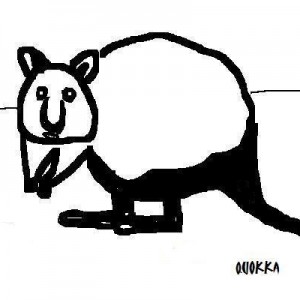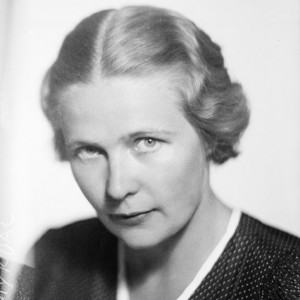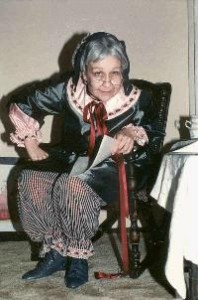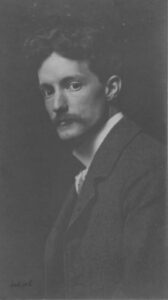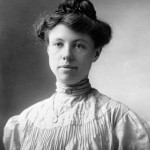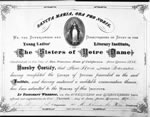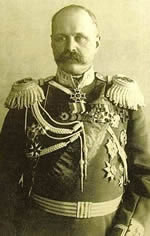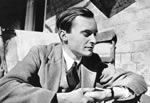This is just a sampling of our members. Some have book covers illustrated on the Member Publications page; the pictures here represent other projects of members. If you are a member and would like to submit a profile or image, please email it to webmaster@instituteforhistoricalstudy.org.
Judith Strong Albert’s career as writer and educator has included lectureships at San Francisco State University and UC Berkeley. Her book Minerva’s Circle describes four 19th-century New England women—Margaret Fuller, Elizabeth Peabody, Lydia Maria Child, and Caroline Healey Dall—and explores their impact on late 20th-century feminists including Gerda Lerner, Gloria Steinem, Carolyn Heilbrun and Betty Friedan — with an eye to seeing how issues confronting the original circle have been met and dealt with over time. These persistent issues include women’s and children’s rights, civil rights and human rights. She is a contributing book reviewer for the Women’s Studies Interdisciplinary Journal.
 John Hyde Barnard is a musician, writer, historian and a retired Los Angeles City Librarian. He recently signed a publishing deal for THE CREOLE INCIDENT: The Beginning of the End of Slavery. This historical narrative details how the Union and the Constitution were saved, twenty years before the Civil War, by the actions of a few select members of the House of Representatives, led by the venerable John Quincy Adams, along with a handful of radical abolitionists and nineteen individuals – who were all slaves. The book is slated for release in late 2022. John is still active as a musical arranger, director, publisher and performer and divides his time between Sausalito, Los Angeles and New York.
John Hyde Barnard is a musician, writer, historian and a retired Los Angeles City Librarian. He recently signed a publishing deal for THE CREOLE INCIDENT: The Beginning of the End of Slavery. This historical narrative details how the Union and the Constitution were saved, twenty years before the Civil War, by the actions of a few select members of the House of Representatives, led by the venerable John Quincy Adams, along with a handful of radical abolitionists and nineteen individuals – who were all slaves. The book is slated for release in late 2022. John is still active as a musical arranger, director, publisher and performer and divides his time between Sausalito, Los Angeles and New York.
 Stephen Barton has a Ph.D. in City & Regional Planning from the University of California, Berkeley and serves on the board of the Bay Area Community Land Trust. Retired from the City of Berkeley, he is the author of numerous articles and book chapters on housing policy and the history of housing-related social movements. His longterm project, a biography of Berkeley Mayor J. Stitt Wilson (1868 – 1942), a lifelong advocate for socialism as applied Christianity, was published by the Berkeley Historical Society in 2021.
Stephen Barton has a Ph.D. in City & Regional Planning from the University of California, Berkeley and serves on the board of the Bay Area Community Land Trust. Retired from the City of Berkeley, he is the author of numerous articles and book chapters on housing policy and the history of housing-related social movements. His longterm project, a biography of Berkeley Mayor J. Stitt Wilson (1868 – 1942), a lifelong advocate for socialism as applied Christianity, was published by the Berkeley Historical Society in 2021.
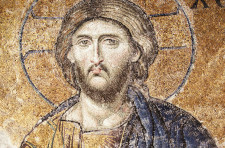 Enrico Beltramini holds doctoral degrees in theology, history, and business, with academic training in theology, history, and social theory. He taught theology and the history of Christianity for 25 years at UC Berkeley, Santa Clara University, and Notre Dame de Namur University, where he is now a senior researcher. Author of five monographs and over seventy articles, his work centers on Christianity in South Asia, the history and theology of digital technology, and modern historiography of medieval Christianity, combining interdisciplinary perspectives to explore the intersections of faith, culture, and intellectual history.
Enrico Beltramini holds doctoral degrees in theology, history, and business, with academic training in theology, history, and social theory. He taught theology and the history of Christianity for 25 years at UC Berkeley, Santa Clara University, and Notre Dame de Namur University, where he is now a senior researcher. Author of five monographs and over seventy articles, his work centers on Christianity in South Asia, the history and theology of digital technology, and modern historiography of medieval Christianity, combining interdisciplinary perspectives to explore the intersections of faith, culture, and intellectual history.

Alan Chadwick at Covelo Garden, mid-1970s (Alan Chadwick Archive)
Dot Brovarney works as a consulting historian through her business, Landcestry (www.landcestry.com). She specializes in research, oral history, writing, and exhibit development. Her current endeavor is an oral history of student apprentices who trained under master gardener and teacher Alan Chadwick at five organic gardens between 1967 and 1980 (www.talkingchadwick.org). Brovarney, who earned her M.A. from UCSB, spent ten years in the museum field and recently researched and curated an exhibit on California native plant specialist Carl Purdy. She is co-author of the book Remember Your Relations: The Elsie Allen Baskets, Family & Friends (Heyday Books, 2005).
David Chadwick:
In 1966 I started practicing Zen Buddhism at the San Francisco Zen Center with Shunryu Suzuki Roshi, who ordained me as a priest in 1971 just before he died. I continued my studies with Zentatsu Baker Roshi and helped the Zen Center develop its centers and businesses. For the last twenty years or so I’ve mainly worked on writing and preserving the legacy of Shunryu Suzuki, whose biography, Crooked Cucumber, I wrote. My three Zen websites are the main repository of this work, but I am aiming at several other books. Cuke.com is an extensive oral history, and shunryusuzuki.com presents the archive of Suzuki’s lectures, audio, transcripts, film, and photos. I am currently working with over a dozen volunteers online to develop and improve this archive.

Mayors Angelo Rossi (SF) and Fiorello LaGuardia (NY) on Golden Gate Bridge, 1937 (SF Public Library)
Rose Marie Cleese: Rose Marie Cleese, a former creative director and copy chief, is currently researching and writing a “life and times” account of Angelo J. Rossi, mayor of San Francisco from 1931 to 1944 and her maternal grandfather. She also currently provides developmental and copy editing services, having edited books for several IHS members as well as for a number of other non-fiction authors. During her marketing career, she wrote back cover and jacket copy for scores of titles while overseeing book marketing campaigns. She has also written several articles for the San Francisco Historical Society’s Panorama newsletter and The Argonaut journal.
Neil Bernard Dukas has authored two books on the pre-annexation military history of Hawaii. He is currently working on a detailed biography of Colonel Volney V. Ashford (First Regiment of Hawaiian Volunteers), a comparative paper on the Hawaiian Articles of War, and a study of Hawaii’s armed forces during the reign of King Kalakaua. Website: www.dukas.org
 Nathan Alexander Foxton is an artist living in San Francisco. Before moving there last year he had been working in Indianapolis, IN where he curated at the Harrison Center for the Arts and taught as an adjunct at Ivy Tech Community College, University of Indianapolis, and Herron School of Art + Design. He’s a figurative painter, constructing space from a two-dimensional perspective. He’s interested in telling stories through his art about the soul of place and has a background teaching art history among other subjects.
Nathan Alexander Foxton is an artist living in San Francisco. Before moving there last year he had been working in Indianapolis, IN where he curated at the Harrison Center for the Arts and taught as an adjunct at Ivy Tech Community College, University of Indianapolis, and Herron School of Art + Design. He’s a figurative painter, constructing space from a two-dimensional perspective. He’s interested in telling stories through his art about the soul of place and has a background teaching art history among other subjects.

Leslie Friedman
Leslie Friedman is a dancer and choreographer with an A.B. from Vassar College and a Ph.D. in modern British history from Stanford University. She has taught British history at Stanford, Case Western Reserve, and Mills College. Often her choreography is based on real historic events, such as World War I and the California Gold Rush. She has performed and lectured internationally, in part through the Fulbright Association and the US State Department. Artistic director of The Lively Foundation and co-editor of its international arts review The Hedgehog, her writing on history and the arts has been published in France, India, and Poland as well as in the US.
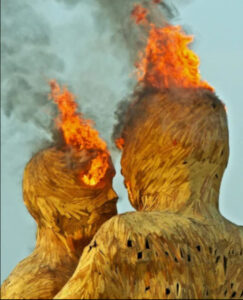 Jim Gasperini recently completed a cultural history of fire, provisionally titled Fire in the Imagination – from the Burning Bush to Burning Man, How We Imagine Fire. Among his history-related publications since earning his B.A. from Williams College are interactive books about history for young adults for Bantam, a computer strategy game about Central America, Hidden Agenda, The Colburn Chronicles, an online family history, and stereograph sets for the White House Historical Association, National Historical Parks, and National Battlefields.
Jim Gasperini recently completed a cultural history of fire, provisionally titled Fire in the Imagination – from the Burning Bush to Burning Man, How We Imagine Fire. Among his history-related publications since earning his B.A. from Williams College are interactive books about history for young adults for Bantam, a computer strategy game about Central America, Hidden Agenda, The Colburn Chronicles, an online family history, and stereograph sets for the White House Historical Association, National Historical Parks, and National Battlefields.
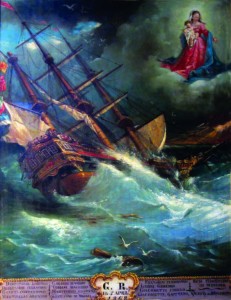
“Sailing to Australia,” ex-voto painting by Giovanni Vanoni
Marilyn L. Geary
Marilyn L. Geary is an oral historian and author focused on immigration and regional California history. A native Californian, she has written the family biography Miners, Milkers & Merchants: from the Swiss-Italian Alps to the Golden Hills of Australia and California. Her other works include: Marin City Memories, oral histories of Black shipyard workers who migrated to the San Francisco Bay Area during World War II; the Madonna del Lume Celebration, a Local Legacies project of the American Folklike Center, Library of Congress; and Marin Mindscapes: Art, Nature, Wellness. She is currently doing research on historic hot springs in Italy. More information at marilynlgeary.com.
 David Goldberg After studying biology at Columbia University, David came to San Francisco to be a Research Associate at UCSF. Later he metamorphosed into a photographer. In horticultural photography he shot three books plus calendars and many others. He taught Hort Photography for 22 years at UC Berkeley, from which he is now retired. His fine art photography moved in the direction of approaching documentary subjects through the prism of contemporary visual art, combining photography, painting & writing. His current projects are A Family History concerning immigration to America from the Russian Pale, and Truth, an examination of the fungibility of photographic & philosophical truth in a social, political & historical context. Website: davidgoldbergimages.com
David Goldberg After studying biology at Columbia University, David came to San Francisco to be a Research Associate at UCSF. Later he metamorphosed into a photographer. In horticultural photography he shot three books plus calendars and many others. He taught Hort Photography for 22 years at UC Berkeley, from which he is now retired. His fine art photography moved in the direction of approaching documentary subjects through the prism of contemporary visual art, combining photography, painting & writing. His current projects are A Family History concerning immigration to America from the Russian Pale, and Truth, an examination of the fungibility of photographic & philosophical truth in a social, political & historical context. Website: davidgoldbergimages.com
 Bertram M. Gordon (“Bert”) is Professor Emeritus of European History at Mills College. His books include Collaborationism in France during the Second World War (1980) for which he interviewed well-known French wartime collaborators including former members of the Vichy government, and The Historical Dictionary of World War II France: The Occupation, Vichy and the Resistance, 1938-1946 (1998). He has also written on culinary history, co-editing “Food and France: What Food Studies Can Teach Us about History,” a special issue of French Historical Studies (April 2015), and has written on the history of chocolate in France, England, and California. His most recent book, War Tourism: Second World War France from Defeat and Occupation to the Creation of Heritage, was published by Cornell University Press in 2018. He has recently lectured on the researching and writing of War Tourism and on the history of haute cuisine. Current projects include the study of the broader links between tourism and war. Bert is Co-Editor of the Journal of Tourism History and a core member of the Tourism Studies Working Group at the University of California, Berkeley.
Bertram M. Gordon (“Bert”) is Professor Emeritus of European History at Mills College. His books include Collaborationism in France during the Second World War (1980) for which he interviewed well-known French wartime collaborators including former members of the Vichy government, and The Historical Dictionary of World War II France: The Occupation, Vichy and the Resistance, 1938-1946 (1998). He has also written on culinary history, co-editing “Food and France: What Food Studies Can Teach Us about History,” a special issue of French Historical Studies (April 2015), and has written on the history of chocolate in France, England, and California. His most recent book, War Tourism: Second World War France from Defeat and Occupation to the Creation of Heritage, was published by Cornell University Press in 2018. He has recently lectured on the researching and writing of War Tourism and on the history of haute cuisine. Current projects include the study of the broader links between tourism and war. Bert is Co-Editor of the Journal of Tourism History and a core member of the Tourism Studies Working Group at the University of California, Berkeley.
John Graham  is a visual artist, writer and oral historian, whose body of work is about California. He is the creator of the El Fornio Story Cycle, detailing the happenings of a fictional city and county on the California coast. Visit the website to find out more. “Everyone Has A Story To Tell” is his oral history project for the Library of Congress’ Veterans History Project, which records the stories of veterans for inclusion in the national record. John also records family histories. His walking tour, “A Meander: From Jurassic Seas to Woolly Mammoths, William Burroughs & The Pony Express,” takes place throughout the year in San Francisco. John received his Master of Fine Arts from UC Santa Barbara in 2002, with an emphasis in California history, colonial theory, and Spanish mission history.
is a visual artist, writer and oral historian, whose body of work is about California. He is the creator of the El Fornio Story Cycle, detailing the happenings of a fictional city and county on the California coast. Visit the website to find out more. “Everyone Has A Story To Tell” is his oral history project for the Library of Congress’ Veterans History Project, which records the stories of veterans for inclusion in the national record. John also records family histories. His walking tour, “A Meander: From Jurassic Seas to Woolly Mammoths, William Burroughs & The Pony Express,” takes place throughout the year in San Francisco. John received his Master of Fine Arts from UC Santa Barbara in 2002, with an emphasis in California history, colonial theory, and Spanish mission history.
Ann Harlow is an independent art historian specializing in California art from 1850 to 1950. With an M.A. in art history from U.C. Berkeley, she worked at the Oakland Museum, Mills College Art Museum, and for sixteen years as the director of the art museum of Saint Mary’s College, Moraga, California. In addition to exhibition catalog essays, she has published two articles in The Argonaut, Journal of the San Francisco Museum and Historical Society. For several years she has served on the board of the Berkeley Historical Society. She is working on a biography of two prominent early-20th-century San Franciscans, artist Anne M. Bremer and arts patron Albert M. Bender. Some of her writings are at www.annharlow.com.
Sondra R. Herman (“Sunny”) is a retired community college history teacher with an interest in peace studies, internationalism, and women in the European welfare states. She is the author of Eleven Against War: Studies in American Internationalist Thought, 1898-1921 (Stanford, Hoover Press, 1969) and has published essays on Alva Myrdal, Swedish social reformer and diplomat, in Scandinavian Studies (Summer 1995), Peace and Change (October 1998), Alva Myrdal in International Affairs (Uppsala, Department of Peace and Conflict Research, Report No. 66, December 2003), and Feminist Writings from Ancient Times to the Modern World (Tiffany K. Wayne, editor, Greenwood Press, 2011), vol. 2.
David Hirzel’s studies in polar exploration have resulted in several books and plays, with more on the way. Three volumes look deeply into the experiences of Irish explorer Tom Crean’s experiences in the Antarctic in 1901-1916 with Scott’s Discovery and Terra Nova expeditions and Shackleton’s Endurance. Rough Weather All Day presents Patrick Cahill’s daily journal of the disastrous Rodgers expedition in 1881. David’s Terra Nova Press is actively seeking unpublished first-hand accounts of maritime and polar experiences for consideration. When not pursuing a living in architectural design, he writes from his home overlooking the sea in Pacifica. Website: davidhirzel.wordpress.com
Anne Evers Hitz is the author of Emporium Department Store and San Francisco’s Ferry Building (Arcadia), and she is currently working on a book about San Francisco’s lost department stores. She is a graduate of UC Berkeley and St. Mary’s College Executive MBA Program with her own communications consulting firm. In her background is also four years as publicity director at UC Press and editor of Research Magazine. She is currently a member of City Guides, leading tours of the West End of Golden Gate Park and the Ferry Building.
 Dan Kohanski has a lifelong interest in history, particularly European and American, a long career as a computer programmer, and a five-year stint in the Foreign Service. His current historical interest is the development of Judaism and Christianity and how the ways in which they developed have had consequences for the world. Dan has a BA in philosophy (Colgate) and an MS in computer science (Rutgers).
Dan Kohanski has a lifelong interest in history, particularly European and American, a long career as a computer programmer, and a five-year stint in the Foreign Service. His current historical interest is the development of Judaism and Christianity and how the ways in which they developed have had consequences for the world. Dan has a BA in philosophy (Colgate) and an MS in computer science (Rutgers).
Laure Latham is a blogger, storyteller and lawyer. She holds a B.A. in Religious Anthropology from Paris Jussieu University, a B.A. in Law from La Sorbonne and is a lawyer at the Paris Bar. She also studied journalism at City College in San Francisco and copy-editing at UC Berkeley Extension. She has taught international tax at La Sorbonne and founded the award-winning blog, FrogMom. A passionate environmentalist, she has been published in National Geographic Education, the Examiner.com, The Londonist, DailyCandy and Sunset Magazine. She is the author of Best Hikes with Kids: San Francisco Bay Area and co-author of George-Daniel de Monfreid: Ami et confident de Gauguin. She is currently working on a historical novel about Russian America and Ohlone people taking place in 1839 California.
Steven C. Levi is a freelance writer and historian doing time as a grant writer in Anchorage, Alaska. He has written more than 80 books, many of them available on Kindle. He has two areas of expertise: the Alaska Gold Rush and the “teens”: America from 1911 to 1919. He is also the inventor of a new way of thinking which won a $40,000 grant from the University of Oklahoma in 2005. You can take his tutorial by going to “Members” on the “Thinking Outside of the Box” link on his website: www.parsnackle.com. Or you can buy his Kindle book on creative thinking, Eating a Bear with its Own Teeth.
Bonda Lewis, an actor and teacher of theater arts, has done extensive research in order to write and perform a series of one-person shows about historic figures Louisa May Alcott, Jane Austen, Isabella Bird, Amelia Jenks Bloomer, and Sara Bard Field. Her latest production, The Powder Keg, is about army nurses from the Napoleonic Wars to World War Two. See her website, Performances Off the Shelf. She is also working on a historical fiction series for young readers starting with the Orphan Trains and continuing into the women’s suffrage movement.
After growing up in Arizona, Celeste Lipow MacLeod earned Bachelor and Masters degrees from the University of California at Berkeley and did graduate work at Columbia University. She has traveled in Europe, Australia and Asia, with extended stays in India and Japan, and has lived in London, Copenhagen and Rome. She has published two books: Horatio Alger, Farewell, about working-class American migrants of the 1970s, and Multiethnic Australia. Her book in progress, A Woman of Unbearable Opinions: Fanny Trollope’s Singular Eye on Early America, highlights some national characteristics that Fanny Trollope (Anthony’s mother) saw in 1830, which have endured.
With a BA and MFA from Mills College, Stephanie McCoy is the author of Brilliance in the Shadows: A Biography of Lucia Kleinhans Mathews (Arts and Crafts Press, 1998) and the novel Sweet as Cane (Pen and Mouse, 2012). Her second novel, The She-Novelist of Venice, based on the last years of the American writer Constance Fenimore Woolson, is forthcoming.
Jeanne Farr McDonnell is the author of Juana Briones of 19th Century California (University of Arizona Press, 2006). She worked for many years to preserve the Juana Briones adobe in Palo Alto, unsuccessfully, although the National Trust for Historic Preservation named the property to its “Most Endangered” list one year. At present, she is co-authoring a book for the Palo Alto Historical Association about Mayfield, the original town that evolved into Palo Alto. She is also working on a book about Agatha Christie’s work and is serving as a co-historian of the Women’s Club of Palo Alto, preparing for a centennial in 2016.
Peter G. Meyerhof is a practicing dentist with an interest in the history of California during the early to mid 19th century. He has written a comprehensive biography of Dr. Robert Semple, a California pioneer who contributed greatly to the American annexation of California. Portions of this work have been published in The Argonaut and the Colusa County Wagon Wheels. He has also carried out original research on other pioneers, the early history of printing in California, the Sonoma Mission, and the first theatre in California. He is currently researching the lives of several less well-known Californios of the 1830s and 1840s.
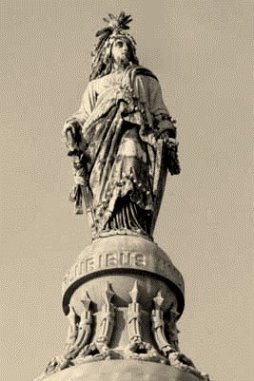 Katya Miller has authored historical articles about the Statue of Freedom atop the US Capitol Dome, published in the US Capitol Historical Society’s beautiful magazine, The Capitol Dome. With a fellowship from the Architect of the Capitol and USCHS, she is writing the book Beloved Freedom: Secret on the Capitol Dome, as well as a children’s book about this icon of Freedom and America. She holds a degree in Design and Art History from the University of California, Berkeley, with a thirty-year career as a metalsmith and jeweler. Her author website, www.katyamiller.com, has PDF copies of her articles.
Katya Miller has authored historical articles about the Statue of Freedom atop the US Capitol Dome, published in the US Capitol Historical Society’s beautiful magazine, The Capitol Dome. With a fellowship from the Architect of the Capitol and USCHS, she is writing the book Beloved Freedom: Secret on the Capitol Dome, as well as a children’s book about this icon of Freedom and America. She holds a degree in Design and Art History from the University of California, Berkeley, with a thirty-year career as a metalsmith and jeweler. Her author website, www.katyamiller.com, has PDF copies of her articles.
Margaretta K. Mitchell (“Gretta”) is a photographer, author and educator who exhibits her fine art photography nationally. She is the author of five books; two are contributions to the history of photography. Her photography was included in the book and traveling exhibition, A History of Women Photographers (1994). She is represented by Robert Tat Gallery in San Francisco and PHOTO Gallery in Oakland. In 2011 she created a short film, Fire Ruin Renewal, to commemorate the Oakland hills fire of October 1991. She does both traditional portrait photography and lower-cost digital portraits that are useful for websites and book jackets. She also produces books for private clients. Website: www.margarettamitchell.com/
David Mostardi, a UC Berkeley alumnus, is the historian at the Berkeley Hillside Club, a community-based organization founded in 1898, dedicated to supporting arts and culture and preserving landmark buildings. Since 1997, he has been researching San Francisco bookseller-publisher Paul Elder and his early business partner, Morgan Shepard; he also writes the website paulelder.org. David’s forthcoming book, A Western Publisher: Paul Elder & Company (1898-1968), is scheduled for publication in 2026 by the Book Club of California. David also leads field trips for the Golden Gate Bird Alliance, and plays accordion for Scottish Country Dancing. He lives in Berkeley with his wife, Arlene Baxter.

Photojournalist Patrick Chauvel in Cambodia, 1973
Elizabeth Nakahara is a former freelance writer for The Washington Post‘s Style section. She also has written for the online magazine, The Digital Journalist. She currently is writing a book about photojournalists who specialize in international, hard-news coverage, and how their role has evolved over the past four decades.
Susan Nuernberg wrote a Ph.D. dissertation on Jack London at UMASS Amherst, taught English at the University of Wisconsin Oshkosh and retired in 2011. She moved to Santa Rosa and became a docent at the Jack London State Historic Park where she realized there was a lot she didn’t know about Jack London’s wife, Charmian Kittredge London. Through in-depth archival research, she found that Charmian led an intrepid Bohemian life in the Bay Area before marrying Jack, that she collaborated with him, wrote three books, and curated his legend following his death. Susan has lectured and published newspaper and scholarly articles on Charmian, and now she is attempting to write a biography of her.
Kathleen O’Connor is a certified archivist with more than 30 years of experience. She worked at the National Archives regional branch in San Bruno for 20 years. She acquired expertise in Native American records, US Naval history in the Bay Area and the Pacific, and federal agencies’ records generated in Hawaii. She has done presentations on the Pearl Harbor attack, the Amelia Earhart search, asbestos litigation, the Radiation Experimentation records search, and cryptographic activities in Hawaii before WWII. Since 2005, Kathleen has worked as an archives researcher and as a consultant on archives. She is currently an archivist working for two Bay Area Catholic religious women’s’ archives and one small liberal arts university. She has presented talks on these archives as well.
 Karen Offen is a historian and independent scholar, affiliated with the Clayman Institute for Gender Research, Stanford University. She is on the board of the International Committee on the Historical Sciences and previously served on boards of the International Federation for Research in Women’s History and the virtual International Museum of Women (San Francisco), where she originated a women’s history blog, “Clio Talks Back.” Karen’s many publications include European Feminisms, 1700‑1950: A Political History (Stanford University Press, 1999; now available in French) and Globalizing Feminisms, 1789-1945 (Routledge 2010). Karen is finally completing her book on the “woman question” debate in modern France. Website: www.karenoffen.com.
Karen Offen is a historian and independent scholar, affiliated with the Clayman Institute for Gender Research, Stanford University. She is on the board of the International Committee on the Historical Sciences and previously served on boards of the International Federation for Research in Women’s History and the virtual International Museum of Women (San Francisco), where she originated a women’s history blog, “Clio Talks Back.” Karen’s many publications include European Feminisms, 1700‑1950: A Political History (Stanford University Press, 1999; now available in French) and Globalizing Feminisms, 1789-1945 (Routledge 2010). Karen is finally completing her book on the “woman question” debate in modern France. Website: www.karenoffen.com.
Judith Offer (“Jody”) is a playwright who has done several plays about American, Californian, or Oakland history. She is particularly interested in portraying various ethnic groups and events involving women’s issues. For example, see the web site from her play called A Shirtwaist Tale, about the 1909 Shirtwaist Maker’s Strike, www.ashirtwaisttale.com. Judith has also written a teachers’ workbook, California History Plays for Young People, available through the Book Handler in Bonita, Ca. For more information see www.JudithOffer.com.
 Phyllis Peet taught women’s studies and directed a women’s program at Monterey Peninsula College. She received her Ph.D. in art history at UCLA, specializing in American art and architecture. Her interests are women in history and art history, including fine prints and photography.
Phyllis Peet taught women’s studies and directed a women’s program at Monterey Peninsula College. She received her Ph.D. in art history at UCLA, specializing in American art and architecture. Her interests are women in history and art history, including fine prints and photography.
Pam Peirce is writing a biography of Katharine Gibson (1893-1960), a “New Woman,” whose still-read pseudonymous memoir of four years in a mental asylum and subsequent recovery has never been connected to her successful and unconventional life as a museum art educator and author of books for children. Pam previously published Golden Gate Gardening: Third Edition, Sasquatch Books, 2010. She has also published an essay, “A Personal History of the People’s Food System,” about her perceptions of an alternative food movement in the 1970s, in the book Ten Years that Shook the City, City Lights Press, 2010. Web site: pampeirce.com.
![]() Jacquelin Pels (“Jackie”) earned her B.A. in journalism at UC Berkeley (30 years after high school) and is devoted to “real people’s history.” She was a copyeditor at the Contra Costa Times and S.F. Chronicle and now—as Hardscratch Press, named for a family codfishing station in the Aleutian Islands—edits and publishes books of memoir and community history. Her own books are Unga Island Girl [Ruth’s Book]; Cuando llegabas, nieto mío; Any Tonnage, Any Ocean, and Family After All: Alaska’s Jesse Lee Home (Vol. II, Seward, 1925-1965), which won the Alaska Historical Society’s “Contributions to Alaska History” award. Details at www.hardscratchpress.com.
Jacquelin Pels (“Jackie”) earned her B.A. in journalism at UC Berkeley (30 years after high school) and is devoted to “real people’s history.” She was a copyeditor at the Contra Costa Times and S.F. Chronicle and now—as Hardscratch Press, named for a family codfishing station in the Aleutian Islands—edits and publishes books of memoir and community history. Her own books are Unga Island Girl [Ruth’s Book]; Cuando llegabas, nieto mío; Any Tonnage, Any Ocean, and Family After All: Alaska’s Jesse Lee Home (Vol. II, Seward, 1925-1965), which won the Alaska Historical Society’s “Contributions to Alaska History” award. Details at www.hardscratchpress.com.
Edith L. Piness (“Edee”) has a Ph.D. in history from the Claremont Graduate University. Her primary academic interest is in British policy and indigenous response in South and Southeast Asia. She has lectured, written and published in this field. She was a member of the California Postsecondary Commission from 1978-1980 and of the California Student Aid Commission from 1980-1991, serving as Chair from 1984-1986. She has served as a member of the Board of Trustees of Pitzer College for many years and has held board positions with the California Historical Society (President 1993-1996), California Missions Foundation, and San Francisco Historical Society.
Oliver Pollak was until 2012 professor of history at the University of Nebraska, Omaha (Ph.D. from UCLA). Among his 11 books (and 650 articles) are To Educate and Serve: The Centennial History of Creighton University School of Law, 1904-2004, where he also received his J.D., and Empires in Collision: Anglo-Burmese Relations in the Mid-Nineteenth Century. Since moving to the Bay Area he has gotten involved in local history, and since joining the Institute board he has become engrossed in the history of the Institute, reviewing 40 years of our newsletters.
Bonnie Portnoy: Following a retail career in senior management positions with Joseph Magnin, Gump’s, Cost Plus World Market and Just Desserts, Bonnie launched the legacy project for noted early California plein air artist and adventurer, Tilden Daken (1876-1935), her grandfather. The website, www.tildendaken.com, features a representation of his art from more than 4000 works and a glimpse of his adventurous painting expeditions in the West during the early part of the 20th century. Portions of the in-progress biography of the artist have been published in recent issues of The Sonoma Historian, including stories of his adventures with his friend Jack London.
 Lyn Reese (BA Mount Holyoke; MA Stanford University, history) began the task of integrating women’s history into the middle through high school World History curriculum in the 1970s. Besides conducting teacher workshops, consulting for textbooks, and publishing books, in 1990 she created the Women in World History Curriculum website, womeninworldhistory.com. The site provides information about her fifteen document-based middle through high school history units, including “I Will Not Bow My Head: Documenting Women’s Resistance in World History” and “Spindle Stories: World History Units for the Middle Grades,” as well as book reviews, essays, and a variety of lessons for teacher use.
Lyn Reese (BA Mount Holyoke; MA Stanford University, history) began the task of integrating women’s history into the middle through high school World History curriculum in the 1970s. Besides conducting teacher workshops, consulting for textbooks, and publishing books, in 1990 she created the Women in World History Curriculum website, womeninworldhistory.com. The site provides information about her fifteen document-based middle through high school history units, including “I Will Not Bow My Head: Documenting Women’s Resistance in World History” and “Spindle Stories: World History Units for the Middle Grades,” as well as book reviews, essays, and a variety of lessons for teacher use.
 Catherine C. Robbins (“Cathy”) is a journalist and non-fiction author. Her most recent book All Indians Do Not Live in Teepees (or Casinos) was published in 2011 by Bison Books/University of Nebraska Press. The book, which is about contemporary American Indians, is now in its second printing. Robbins has also published numerous articles on a wide variety of subjects in press organizations such as High Country News, the Denver Post, The New York Times, and voiceofsandiego.org. Her work-in-progress is Nobody Travels South of Rome: Finding Calabria. The book explores the contemporary life of Italy’s most southern―and least-known―region in its historical context.
Catherine C. Robbins (“Cathy”) is a journalist and non-fiction author. Her most recent book All Indians Do Not Live in Teepees (or Casinos) was published in 2011 by Bison Books/University of Nebraska Press. The book, which is about contemporary American Indians, is now in its second printing. Robbins has also published numerous articles on a wide variety of subjects in press organizations such as High Country News, the Denver Post, The New York Times, and voiceofsandiego.org. Her work-in-progress is Nobody Travels South of Rome: Finding Calabria. The book explores the contemporary life of Italy’s most southern―and least-known―region in its historical context.
Richard Robbins (“Rob”) (Ph.D., history, Columbia University, 1970) taught Russian history at the University of New Mexico for 40 years. His area of special interest is Russian imperial administration and administrators. He has published three books: Famine in Russia, 1891-1892: The Imperial Government Responds to a Crisis (Columbia University Press, 1975); The Tsar’s Viceroys: Russian Provincial Governors in the Last Years of the Empire (Cornell University Press, 1987); and Overtaken by the Night: One Russian’s Journey through Peace, War, Revolution and Terror (University of Pittsburgh Press, 2018). The latter is a biography of Vladimir Dzhunkovsky, a high-ranking official whose life spans the revolutionary era from the “Great Reforms” of Tsar Alexander II to the “Great Terror” of Joseph Stalin.
Maria Sakovich (M.P.H.; M.A. History, Sonoma State University) is a public historian and independent scholar. She researches, writes, and develops exhibits in the areas of immigration, family, and community history. Her articles have appeared in anthologies, as well as Prologue and The Argonaut. La Nostra Storia–Italian Americans in Richmond grew out of the exhibit of the same title at the Richmond Museum of History. Her current work explores the migration of refugees from Russia after the 1917 revolution and civil war and their resettlement in California in the 1920s and 30s.
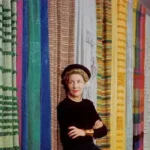 Liz Schott retired from a 30-year career in education, including 10 as a district superintendent, in 2020. Having always loved beautiful garments, she committed to learning how to sew properly, and to becoming more knowledgeable about fashion and textiles. A podcast alerted her to the subject of her biography-in-progress, Dorothy Wright Liebes, a native of northern California and influential designer who dominated the interiors landscape in the first half of the 20th century in San Francisco, Chicago, New York and Hollywood.
Liz Schott retired from a 30-year career in education, including 10 as a district superintendent, in 2020. Having always loved beautiful garments, she committed to learning how to sew properly, and to becoming more knowledgeable about fashion and textiles. A podcast alerted her to the subject of her biography-in-progress, Dorothy Wright Liebes, a native of northern California and influential designer who dominated the interiors landscape in the first half of the 20th century in San Francisco, Chicago, New York and Hollywood.
 Michael Several writes: ” Having never been an academic, I have had the luxury of learning about a great variety of subjects, and taking my time to investigate each one at a leisurely pace. This life long journey resulted in articles on empire building in Ancient Egypt, public memory in Los Angeles, anti-Chinese racism in Redlands, and institutional and community formation of the San Gabriel Valley Jewish community.
Michael Several writes: ” Having never been an academic, I have had the luxury of learning about a great variety of subjects, and taking my time to investigate each one at a leisurely pace. This life long journey resulted in articles on empire building in Ancient Egypt, public memory in Los Angeles, anti-Chinese racism in Redlands, and institutional and community formation of the San Gabriel Valley Jewish community.
Carol Sicherman (BLitt, Oxford, 1962; PhD, English, University of Wisconsin, 1963) taught English and African literatures at Cornell and Lehman College for 37 years. She has published books and articles in both literary fields, winning the Conover-Porter Award from the African Studies Association in 1992 for two reference works on Ngugi wa Thiong’o. Her most recent books were Becoming an African University (2005) and Rude Awakenings: An American Historian’s Encounters with Nazism, Communism and McCarthyism (2012). She is currently researching a collection of 96 postcards in German, Polish, Yiddish, and Hebrew sent to family members in Eastern Europe in 1905-18.
Margaret Simmons, the daughter of late member Ann Marie Koller, is editing her mother’s manuscript on dancer Tilly Losch to be published by the University of Florida Press. She spent her youth in Paris where she married, had children, danced and went to college. She owned a little book bindery and an antiquarian store. She has taught English and French (and sometimes theater) all over the world including Korea, Cambodia, Japan, and Taiwan.
 Steven Sodokoff, a “time ambassador” and fourth-generation private jeweler to San Francisco’s society and connoisseurs, is also a history enthusiast. He followed his heart back to San Francisco after graduating with a BS from Cornell University, where he studied and taught communication arts. His passion for photography and the history of the birth of San Francisco drove him to start cataloging the numerous surviving monumental timepieces around town. His soon to be published book Timepieces: Hidden in Plain Sight is a pictorial and historic guidebook of San Francisco. It shows how time helped shape the development of San Francisco as a modern city.
Steven Sodokoff, a “time ambassador” and fourth-generation private jeweler to San Francisco’s society and connoisseurs, is also a history enthusiast. He followed his heart back to San Francisco after graduating with a BS from Cornell University, where he studied and taught communication arts. His passion for photography and the history of the birth of San Francisco drove him to start cataloging the numerous surviving monumental timepieces around town. His soon to be published book Timepieces: Hidden in Plain Sight is a pictorial and historic guidebook of San Francisco. It shows how time helped shape the development of San Francisco as a modern city.
Patricia Southard has degrees in library & information science, gerontology, and psychology. Most recently, she worked at the Golden Gate National Recreation Area Park Archives in San Francisco. She has written and lectured on a variety of subjects including the history of libraries and archives, Holocaust survivors, aging, women’s health, life transitions, and caregiving. She and fellow member Elizabeth Thacker-Estrada are researching and speaking on the relationship between U.S. first ladies and women’s rights from colonial times to the present. They are planning a book based on their research.
Peter Stansky studied at Yale and Cambridge and completed his Ph.D. at Harvard, where he taught before moving to Stanford University, where he held the endowed Frances and Charles Field Chair in History. Now retired, he has written extensively on modern British culture, particularly on William Morris, George Orwell, the Bloomsbury Group, the London Blitz, as well as on Julian Bell and John Cornford.
Charles Sullivan studied history, psychology and English literature at Swarthmore College. Later he earned a Ph.D. in organizational psychology from New York University, and held various teaching and administrative posts at Georgetown and other institutions. In recent years he has resumed the study of history, using primary sources at Oxford and elsewhere to develop a deeper understanding of the Elizabethan age of discovery. He is writing a book about Francis Drake, Walter Raleigh, and a group of lesser-known figures, based on research he presented at the London meeting of the Society for the History of Discoveries in 2015.
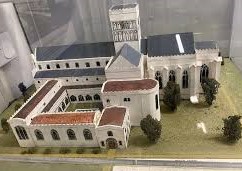 Alice Joanna Thacker earned her doctorate in mental health at St. George’s Hospital Medical School, University of London. Now retired, she was a senior lecturer there and a visiting tutor at Oxford University. She has had a keen interest in the history that surrounds her life in the U.K. and has been active in a variety of projects. She and her husband Bruce volunteered as excavators at the Neolithic Ness of Brodgar, an archeological site on the main island of Orkney, Scotland. They live in London on the site of the William Morris and Arthur Liberty cloth mills, a perfect setting for her to demonstrate her talent in historical textiles: spinning, dyeing, and knitting period costumes. On the grounds of the nearby medieval Merton Priory, close to the Chapter House, Alice is planning and planting a monastic garden that will feature herbal remedies and dye plants.
Alice Joanna Thacker earned her doctorate in mental health at St. George’s Hospital Medical School, University of London. Now retired, she was a senior lecturer there and a visiting tutor at Oxford University. She has had a keen interest in the history that surrounds her life in the U.K. and has been active in a variety of projects. She and her husband Bruce volunteered as excavators at the Neolithic Ness of Brodgar, an archeological site on the main island of Orkney, Scotland. They live in London on the site of the William Morris and Arthur Liberty cloth mills, a perfect setting for her to demonstrate her talent in historical textiles: spinning, dyeing, and knitting period costumes. On the grounds of the nearby medieval Merton Priory, close to the Chapter House, Alice is planning and planting a monastic garden that will feature herbal remedies and dye plants.
Elizabeth Lorelei Thacker-Estrada (“Liz”) (Master of Library and Information Studies, U.C. Berkeley) is a retired San Francisco Public Library branch manager. She has published articles and chapters about First Ladies of the United States, including a chapter on Antebellum presidential wives in A Companion to First Ladies. She is working on a biography of Abigail Powers Fillmore, who founded the White House Library. In 2010, she spoke at the “Reading in the White House” symposium at the Library of Congress in Washington, D.C. Since 2018, she has delivered a series of presentations on First Ladies and Women’s Rights with fellow member Patricia Southard. In observance of the 2020 centennial of the women’s suffrage amendment to the U.S. Constitution, she wrote biographies for the Online Biographical Dictionary of the Woman Suffrage Movement in the United States. She is an Inaugural Lifetime Individual Member of the First Ladies Association for Research and Education (FLARE) and serves on the Advisory Board of the Correspondence of Zachary Taylor and Millard Fillmore project.
Louis Trager: I’ve been a journalist since 1980 (Examiner 1985-97). I’m researching liberal U.S. interventionists in the middle third of the 20th century, concentrating on 1940-56. They included obscure organizers, cloak-and-dagger operators including Allen Dulles, and such other luminaries as Paul Douglas, Henry Luce, Reinhold Niebuhr, Drew Pearson, Eleanor Roosevelt, Harold Stassen and Walter Winchell. They shaped the decades-long “Vital Center” consensus through extensive captive media, prominent pseudo-NGOs, and initiatives in both parties including Americans for Democratic Action. I’m starting with Arthur J. Goldsmith, a New York industrialist, financier, philanthropist and elite foreign-policy activist who became “the dragon of the Waldorf,” a bête noire to the far right.

Christopher Webber is a retired Episcopal priest and author of a number of books on a variety of subjects ranging from Beowulf (The Beowulf Trilogy) to biographies of preCivil War abolitionists like James W.C. Pennington and James McCune Smith. His latest publication (2019) is Christian Psalms for Worship and Prayer. A collection of hymns is due out before the end of the year (2020). Website: www.clwebber.com
 Tim Welsh: I am the owner and operator of the Welsh Income Tax Service in Hayward, California. Founded by my father in 1960, it’s one of the oldest independent income tax filing assistance practices in California. However, my real passion in life is a blog I created in 2013, sfinfilm.com. A then and now tour and history of San Francisco through updated comparison pictures I’ve taken, it includes vintage photography, films, literature, and personal recollections. The site is a lot of fun to work on and attracts views from visitors around the world
Tim Welsh: I am the owner and operator of the Welsh Income Tax Service in Hayward, California. Founded by my father in 1960, it’s one of the oldest independent income tax filing assistance practices in California. However, my real passion in life is a blog I created in 2013, sfinfilm.com. A then and now tour and history of San Francisco through updated comparison pictures I’ve taken, it includes vintage photography, films, literature, and personal recollections. The site is a lot of fun to work on and attracts views from visitors around the world


